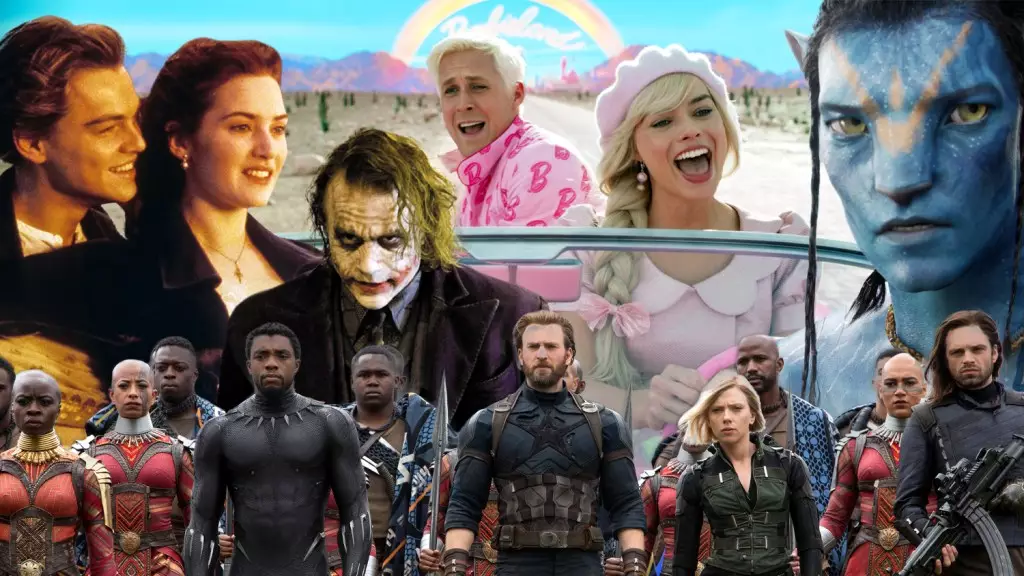The film industry has faced significant challenges in recent years, with overlapping strikes and the rise of streaming platforms impacting the domestic box office. As my colleague Anthony D’Alessandro has pointed out, these factors are expected to result in a billion-dollar reduction in the domestic movie box office by 2024. This raises an important question: would the film industry be in better shape if the majority of cuts were made at the top? There is a compelling case to be made for this argument.
One of the most noticeable distortions in recent years has been the trend towards extreme top-loading at the box office. In 2023, the three highest-grossing films were Barbie, The Super Mario Bros. Movie, and Spider-Man: Across the Spider-Verse, collectively generating around $1.6 billion in ticket sales. These three films accounted for a staggering 17.8 percent of the domestic theatrical total, based on Anthony’s estimates.
This figure, although slightly lower than the share claimed by the top three films in the previous three Covid-impacted years, is still significantly higher than the top three box-office share in healthier years. Between 2015 and 2019, a period that saw the release of blockbuster hits like Black Panther and Jurassic World, the top three films averaged only about 14.5 percent of the box office. Even in the five years prior to that, from 2010 to 2014, including the success of Avatar and The Avengers, the top three films accounted for just 10.9 percent of the total box office.
For some reason, perhaps due to the evaporation of lower- and middle-range films or the disappearance of older viewers, the audience’s attention has shifted towards a small number of films at the very top, leaving the rest to wither. This concentration of interest could be attributed to various factors, including the pervasive influence of social media.
By delving into the numbers, we can see that after subtracting the earnings of the top three films, approximately 580 films shared the remaining $7.4 billion in ticket sales in 2023. This translates to an average take of $12.7 million per film. Comparatively, in 2010, a larger group of around 650 films had an average take of $14.5 million, which is about 14 percent higher than the average of the previous year, even without accounting for inflation.
This imbalance in box-office success has resulted in a top-heavy industry, making it increasingly challenging for everyone involved to thrive, despite the growth of streaming revenue. If the industry is to regain its balance and thrive, it may be necessary to trim the overgrown parts that currently dominate the box office.
The distorted landscape of the box office poses several risks and challenges for the film industry. This top-heavy model not only limits the audience’s exposure to a diverse range of films but also makes it harder for independent filmmakers and smaller productions to gain traction and find success.
While it is important to acknowledge the impact and popularity of box office hits, there is a strong case to be made for creating a more balanced ecosystem that allows a wider range of films to thrive. By distributing the success more evenly across the industry, there would be a greater opportunity for innovation, artistic expression, and the discovery of new talent.
Efforts should be made to revitalize the middle ground, where films can find steady support and achieve moderate success. This would require a collaborative approach from stakeholders across the industry, including studios, distributors, and exhibitors. By investing in a diverse range of projects and embracing new voices, the film industry can pave the way for a healthier and more sustainable future.
The distortion of success at the box office, with a disproportionate focus on a small number of films, has created an imbalanced industry. A more equitable distribution of success, with a greater emphasis on supporting a wider range of films, would not only benefit the industry as a whole but also provide audiences with a richer and more diverse cinematic experience. It is time for the film industry to reevaluate its priorities and work towards a more sustainable future.


Leave a Reply